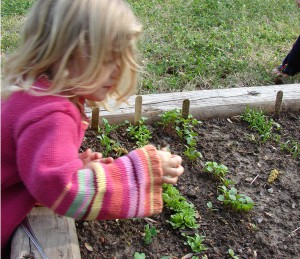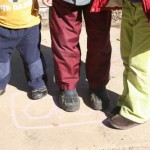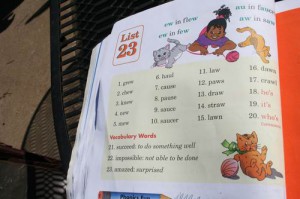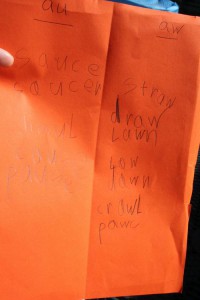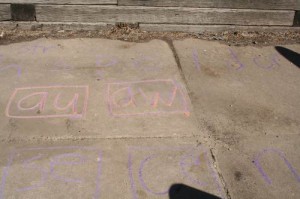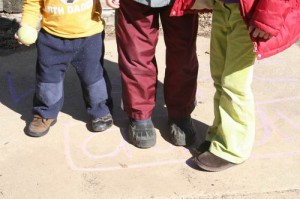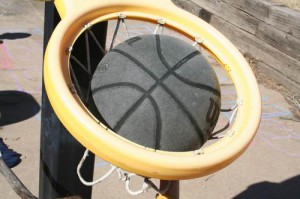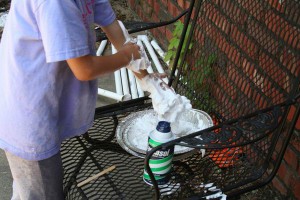 When I saw that Moneysavingmom is doing a series on frugal family fun, I thought, “Great! Whatever we’re doing tomorrow I’ll take pictures and that will be our Frugal Family Fun!” Turns out, we had several fun activities.
When I saw that Moneysavingmom is doing a series on frugal family fun, I thought, “Great! Whatever we’re doing tomorrow I’ll take pictures and that will be our Frugal Family Fun!” Turns out, we had several fun activities.
Maybe we have this much fun every day and I just don’t notice because I’m not looking forward to it with the camera ready!
No, probably not.
Fun Activity #1: Shaving Cream Cost: $3 normally, but free since I had it
Let me start this by saying my mom is in town, so it’s not like we do all this crazy stuff every day. My goal was to keep the kids busy while I worked on serious decluttering. During my decluttering of the laundry room cabinets, I came up with a bag of junk fun activities that I wanted to get rid of/use up while my mom is here.
There was no writing of the alphabet in the shaving cream or anything educational. My thinking about the project was, “Whatever.”
My six-year old decided to paint her limbs, then announced, “I’m the White Witch. I declare my dominion!”
(Yes, she knows the White Witch was evil and wanted to rule the world, but she still wants to be her. This is slightly troubling.)
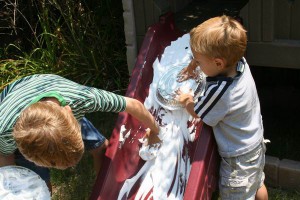 My sons worked together to paint the little fort with shaving cream.
My sons worked together to paint the little fort with shaving cream.
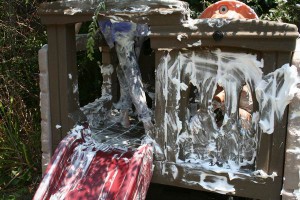 And more fort painting . . .
And more fort painting . . .
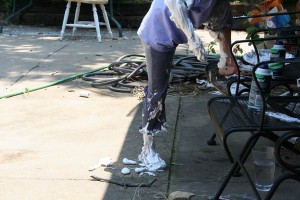
Then, more body painting . . .
You are not really seeing huge piles of trash in the background there. You’re just hallucinating because of the heat.*
This went on for some time, with the kids progressing to nakedness (toddler), then swimsuits, then to playing in the water. All told, the shaving cream/water fun lasted a couple of hours.
Fun #2: Boats Cost: Free
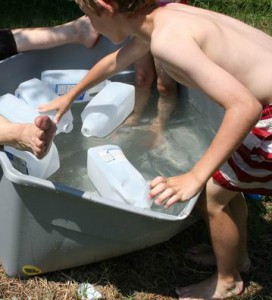 At some point along the way I put the toddler (who is doing wonderfully on his potty training this week, by the way) down for his nap.
At some point along the way I put the toddler (who is doing wonderfully on his potty training this week, by the way) down for his nap.
The older two then rummaged through the recycling box for empty milk cartons and made a fleet of boats (their own idea).
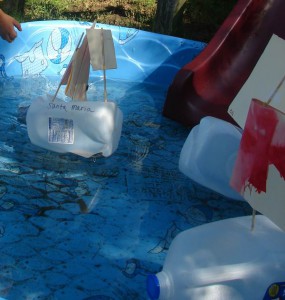
They had quite a time with normal old milk cartons, but you can also fancy them up with toothpicks and make flags on them if you want.
Here’s a picture from when we were studying Columbus a couple of years ago and made the Nina, Pinta, and Santa Maria. That was really fun.
(The moss you see growing on the bottom of the pool is also a hallucination due to the heat.)
Fun #3: Popsicles Cost: $1-2
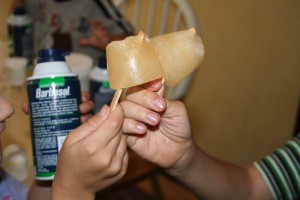 Cheers!
Cheers!
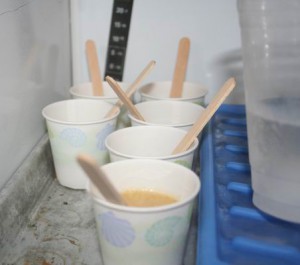 We just do paper cups with sticks in them, filled with orange juice, but somehow it is very exciting to my kids who ask for them constantly.
We just do paper cups with sticks in them, filled with orange juice, but somehow it is very exciting to my kids who ask for them constantly.
When friends come over who are used to normal popsicles they are wholly unimpressed, but my kids
don’t know any better and think these are great!
Fun #4: Work (Raking Plum Pits) Cost: $2 (I paid him for 15 min of work)
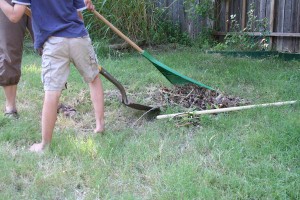 I find that my kids often enjoy working on special projects, so I hoped that today they’d so something useful that was also fun. My angel mother was raking up the plum pits, so my son joined in and earned a couple of dollars.
I find that my kids often enjoy working on special projects, so I hoped that today they’d so something useful that was also fun. My angel mother was raking up the plum pits, so my son joined in and earned a couple of dollars.
My son really enjoys doing hard work and earning money most of the time. (He complains sometimes too, but especially yard work he likes. I think it makes him feel tough.)
One thing I messed up on though was: SUNSCREEN!!! I forgot about sunscreen! This was one of our first days outside for hours, and I was in and out, so the kids got burned.  Yikes. So be sure to remember that.
Yikes. So be sure to remember that.
Also, if you do the shaving cream, make sure and tell your kids to be careful of getting it in their eyes. I don’t think it would cause permanent blindness, but probably would result in lots of screaming. My toddler got it all around his eyes and I kept
wiping his face off, but it never seemed to irritate him. (The shaving cream, I mean. The wiping of the face did irritate him.)
Have fun!
* Okay, fine, you were seeing big piles of trash. Our backyard closely resembles a trash heap most days, but today my saintly mother actually managed to clean the whole thing while she was out there with the kids. How did she do that? Normally I cheer myself with the knowledge that the awfulness of our backyard encourages all who see it that their own yards are gardens of delight by comparison.
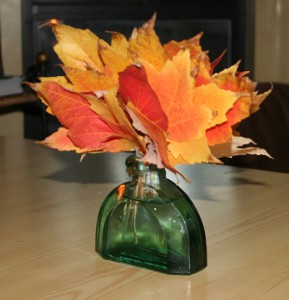 Do you ever gaze awestruck at the autumn leaves and have to
Do you ever gaze awestruck at the autumn leaves and have to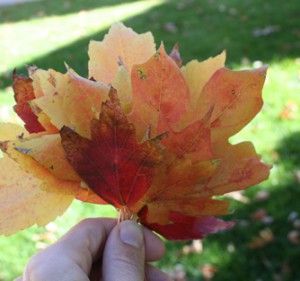 1. Collect the best leaves you can find, the ones that make your heart skip a beat, as you walk down the street with your children.
1. Collect the best leaves you can find, the ones that make your heart skip a beat, as you walk down the street with your children. 2. When the time comes that you must go inside, wrap the stems with Scotch tape to hold them together.
2. When the time comes that you must go inside, wrap the stems with Scotch tape to hold them together.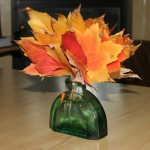 3.Plunk them into a glass jar, vase, jelly jar or
3.Plunk them into a glass jar, vase, jelly jar or
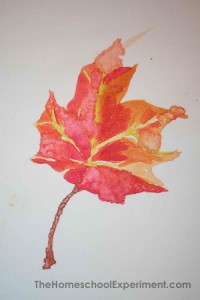

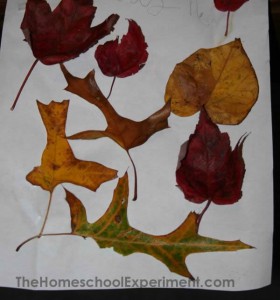
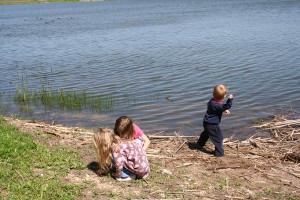
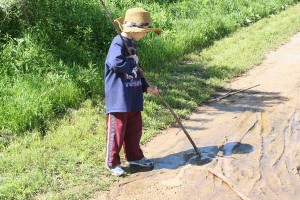
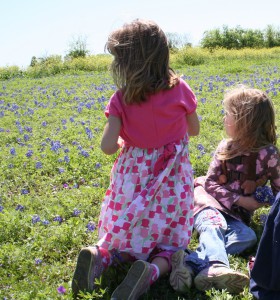











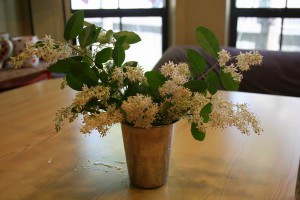
 One gorgeous rose in one beautiful glass (my grandmother’s juice glass). It doesn’t take much to brighten up a room.
One gorgeous rose in one beautiful glass (my grandmother’s juice glass). It doesn’t take much to brighten up a room.